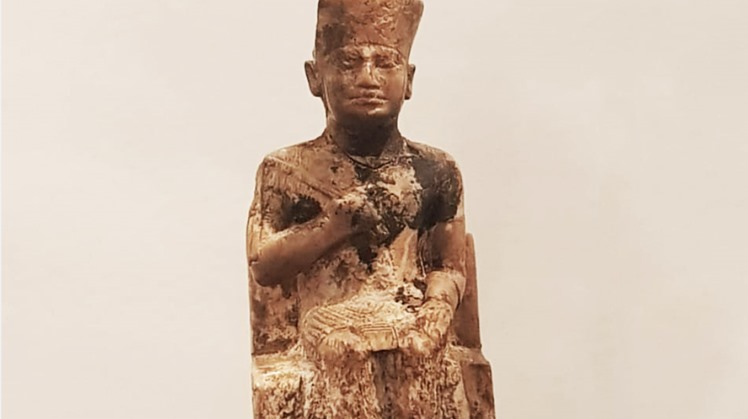The Egyptian Museum is the oldest archaeological museum in the Middle East, and it includes the largest collection of ancient Egyptian antiquities in the world. The museum displays a large collection that extends from the pre-dynastic period to the Greek and Roman eras. Among the exhibited pieces is a statue of King Khufu (about 2589-2566 BC) , which dates back to the era of the Old Kingdom, the Fourth Dynasty.
Researchers found the statue of King Khufu in Abydos, and in this report we review pictures taken at the discovery site of the archaeologist Petri, Lucy's archive.
The Ministry of Tourism and Antiquities had inaugurated the first phase of the museum development project, which is carried out in cooperation between the Ministry of Tourism and Antiquities and the European Union, with the participation of a scientific committee that includes a number of Egyptologists from Egyptian universities and five major European museums, which are the Louvre Museum, the British Museum, the Egyptian Museum in Turin, the Berlin Museum, and the National Museum of Antiquities in Berlin. Leiden, Netherlands.
And the Egyptian Museum, whose entrance ticket for Egyptians costs 30 pounds and 10 pounds for an Egyptian student. Its recent development work was represented in the development of the prehistoric and ancient era hall on the ground floor of the museum, and the development of the museum display scenario for its holdings, in which the idea of ownership and the products of that period of stone tools and pottery crystallize. and ivory accessories.
The first royal statue in Egyptian civilization was also re-displayed in that hall and the inscriptions of the cemetery of 100 of the Zero Dynasty from Hierakonpolis. The halls of the Old Kingdom were also developed on the ground floor and the museum display scenario, which includes the most important arts of sculpture and engraving during the era of the Old Kingdom, with the re-display and restoration of inscriptions The tomb of "Nefer Ma'at" and "Atat", my father, the engineer Khem-Iono, who built the Great Pyramid.
In addition, the halls of the late era were developed on the ground floor, which includes the most important antiquities discovered from Tuna El-Gebel, the most important of which is the rare wooden sarcophagus of Ba-de-Osir, and finally the treasures of Tanis were re-displayed in the first floor, where the antiquities of the Silver King of Susense were shown for the first time in a single hall and re- Display of the effects of King Amun-Am-Opet, King Sheshonq, and the army commander Wen-Gbao-An-Ged.
 Wed, Mar. 1, 2023
Wed, Mar. 1, 2023